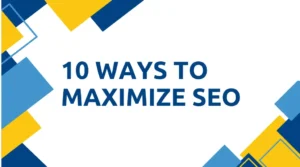In today’s digital landscape, relying solely on paid ads to drive traffic to your Shopify store can be costly. Fortunately, there’s an effective alternative: search engine optimization (SEO). By implementing SEO strategies, you can attract visitors to your store without incurring ongoing advertising expenses. This guide outlines essential steps to optimize your Shopify store for search engines, ensuring you achieve better rankings and consistent organic traffic over time.
Understanding SEO
At its core, SEO aims to enhance your website’s visibility on search engines like Google. When potential customers enter specific search queries, your goal is for your Shopify store to appear at the top of the results. This process involves optimizing your site so that search engines understand what your store offers and deem it a relevant answer to user queries. The foundation of SEO lies in keywords, which are terms or phrases that potential customers are likely to use when searching for products or services like yours.
Finding the Right Keywords
To effectively choose keywords for your store, utilizing tools like Google Keyword Planner is invaluable. This free tool helps identify keywords that your target audience is searching for. Begin by entering terms related to your business, and the tool will generate a list of relevant keywords along with their search volume. For instance, if your store sells handmade soap, typing “handmade soap” will reveal the average monthly searches and suggest related keywords.
Selecting keywords with high search volumes is crucial. Targeting low-volume keywords may not yield significant traffic, even if you rank well for them. Ideally, you should select one primary keyword that will serve as the cornerstone of your SEO strategy, complemented by two or three secondary keywords that also have good search potential. For a handmade soap store, the primary keyword could be “handmade soap,” while secondary keywords might include “natural soaps” and “homemade soaps.”
Implementing Keywords in Your Store
Once you have identified the appropriate keywords, it’s essential to integrate them into your Shopify store so that search engines can easily find and rank your pages. Search engines examine the code behind your website, looking for specific tags that indicate relevance to search terms. Shopify themes simplify this process, automatically generating much of the necessary code.
Key areas to focus on include title tags, H1 tags (headings), and the text on your pages. When setting up your collection pages, start by editing the H1 tag to include your primary keyword. In the description area, write a compelling collection description that naturally incorporates both your primary and secondary keywords. Additionally, update the search engine listing section by crafting a page title and meta description that also feature these keywords. Including your primary keyword in the URL handle is also a best practice.
Creating Quality Content
To keep your site active and maintain relevance, consider adding fresh content regularly. Blogging is an excellent way to achieve this, as search engines favor sites that update their content frequently. Aim to publish new blog posts at least once a month, ideally every two weeks. Generating blog post ideas can be a challenge, but tools like “Answer the Public” can provide you with numerous suggestions based on popular search queries.
For example, typing “natural soap” into this tool can yield blog topics such as “Where to Buy Natural Soap” and “Is Natural Soap Vegan?” Each blog post should be optimized with relevant keywords, meta descriptions, and engaging titles to maximize visibility.
Optimizing Product Pages
In addition to collection pages, product pages also require careful optimization. Similar to collections, ensure that you incorporate the primary keyword into the title, description, and metadata. One unique aspect of product pages is the need to use alt tags for images. Alt tags describe the content of images to search engines, enabling them to understand what the images depict. Use relevant keywords in your alt tags while providing clear descriptions of the images.
It’s essential to avoid duplication in your alt tags, especially if you have multiple images of the same product. For instance, if you have several photos of avocado natural soap, you might use different alt tags for various angles—such as “avocado natural soap front view” and “avocado natural soap close-up.” This strategy ensures that each image is recognized by search engines while still being associated with your primary keyword.
Enhancing Your Store’s Overall SEO
Beyond optimizing individual pages, it’s essential to ensure that your entire Shopify store is set up for success. Begin by checking your homepage settings in the Shopify preferences section. Make sure to include relevant keywords in your homepage title and provide a clear meta description that encourages clicks. Incorporating a call-to-action in your description can also improve click-through rates when users see your site listed in search engine results.
Technical aspects, like the sitemap XML, are automatically generated by Shopify, making it easier for search engines to navigate your site. Submitting your sitemap to search engines can enhance the indexing of your pages, improving visibility.
Maintaining an SEO Checklist
Creating a checklist to follow during the SEO optimization process can be beneficial. This list should include all the tasks needed for both initial setup and ongoing maintenance. For instance, regularly updating blog content, checking for keyword relevance, and ensuring all product images have appropriate alt tags are all critical components of effective SEO.
Using tools like ChatGPT can assist in generating product descriptions and blog content, allowing you to save time while ensuring quality. Consistency and commitment to SEO practices will pay off in the long run as your Shopify store climbs the search engine rankings and attracts organic traffic.
Creating Your Shopify Sitemap
The sitemap XML is essential for search engines to navigate your store. With Shopify, a sitemap is automatically generated, ensuring search engines can easily access and index your content. To view your sitemap, simply add “/sitemap.xml” to the end of your store’s URL. This will display a list of all your store’s pages and collections, which search engines can use to crawl your site efficiently.
Next, you should submit your sitemap to search engines. For Google, you can do this through Google Search Console. After logging in, select your property, navigate to the “Sitemaps” section, and enter the URL of your sitemap. This submission helps ensure that Google is aware of your pages and can crawl them effectively.
Another important aspect to consider is your store’s robots.txt file. This file instructs search engines on which pages to crawl and which to ignore. With Shopify, this file is automatically created, but it’s crucial to check that it isn’t blocking any important pages. To view your robots.txt file, simply add “/robots.txt” to your store’s URL. Ensure that critical pages, such as product pages and collections, are accessible for indexing.
Leveraging Backlinks
Backlinks are another key component of SEO. These are links from other websites to your store, and they can significantly enhance your site’s authority and ranking. The more high-quality backlinks you have, the better chance you have of ranking higher in search results. To acquire backlinks, you can engage in guest blogging, reach out to influencers in your niche, or collaborate with other businesses for cross-promotions.
You can also participate in forums or communities related to your industry and share your expertise. When you provide valuable information, people may link back to your store, generating backlinks organically. Building relationships with other bloggers and businesses can create opportunities for mutual linking, enhancing your online presence.
Utilizing Social Media for SEO
While social media does not directly impact SEO rankings, it plays a significant role in driving traffic to your store. By sharing your content, blog posts, and product offerings on platforms like Facebook, Instagram, and Pinterest, you can attract visitors who may not have discovered your store through search engines.
Creating engaging and shareable content can encourage your followers to spread the word, resulting in more potential backlinks and increased visibility. Additionally, consider incorporating social sharing buttons on your product pages and blog posts to make it easy for visitors to share your content with their networks.
Optimizing for Mobile
As mobile shopping continues to rise, ensuring your Shopify store is mobile-friendly is crucial for SEO. A responsive design adapts to different screen sizes, providing an optimal browsing experience for users on smartphones and tablets. Google prioritizes mobile-friendly websites in search rankings, so testing your store’s mobile usability is vital.
You can use Google’s Mobile-Friendly Test tool to assess your site and identify any areas that need improvement. If your store isn’t mobile-optimized, consider switching to a responsive theme or making necessary adjustments to enhance its functionality on mobile devices.
Analyzing Your Performance
To measure the effectiveness of your SEO efforts, utilize tools like Google Analytics and Google Search Console. These platforms provide insights into your site’s performance, including traffic sources, user behavior, and conversion rates. By analyzing this data, you can identify which strategies are working and which need adjustment.
In Google Analytics, track key metrics such as organic traffic, bounce rates, and average session duration. These insights can guide your decision-making and help you refine your SEO strategy for better results. In Google Search Console, monitor your site’s indexing status, search queries, and click-through rates to understand how users find your store and which keywords drive traffic.
Regularly reviewing your SEO performance ensures that your strategies remain effective and allows you to adapt to changes in search algorithms or market trends.
Expanding Your Keyword Strategy
As you become more comfortable with your initial keyword strategy, consider expanding it. Long-tail keywords, which are longer and more specific phrases, often have less competition and can drive targeted traffic to your store. Use tools like Ubersuggest or Ahrefs to explore additional keyword opportunities and discover relevant long-tail phrases to target.
Incorporating these long-tail keywords into your product descriptions, blog posts, and meta tags can enhance your visibility for niche searches. Regularly updating your keyword strategy ensures your content remains relevant and optimized for current search trends.
Engaging with Your Audience
Building a community around your brand can greatly enhance your SEO efforts. Engage with your audience through newsletters, social media, and blog comments. Encouraging feedback and interaction not only fosters loyalty but can also generate user-generated content, which is valuable for SEO.
User-generated content, such as reviews, testimonials, and photos, can provide fresh content for your store while enhancing your credibility and authority in your niche. The more engaged your audience is, the more likely they are to share your content, increasing your chances of earning backlinks and driving organic traffic.
By focusing on building relationships with your customers and creating an engaging brand presence, you’ll strengthen your SEO foundation while fostering a loyal customer base.
Incorporating Local SEO Strategies
If your Shopify store caters to a local audience, optimizing for local SEO can help you attract nearby customers. Start by claiming your Google My Business listing and ensuring your store information is accurate and complete. This listing helps your business appear in local search results and on Google Maps.
In addition to claiming your listing, consider incorporating local keywords into your content. For instance, if you sell handmade soap in a specific city, include that location in your product descriptions, blog posts, and meta tags. Building local backlinks, such as collaborating with local businesses or participating in community events, can also enhance your local SEO.
Encouraging customer reviews can further boost your local SEO efforts. Positive reviews not only improve your store’s reputation but also help it rank higher in local search results. Encourage satisfied customers to leave reviews on your Google My Business listing and social media pages.
Regularly Updating Your SEO Strategy
SEO is not a one-time task but an ongoing process. The digital landscape is constantly changing, and search engine algorithms are frequently updated. To stay ahead of the competition, regularly revisit and update your SEO strategies based on performance data, industry trends, and user behavior.
Setting a schedule for SEO audits can help ensure your strategies remain effective. During these audits, review your keyword performance, analyze your website structure, and assess your content’s relevance. Identify areas for improvement and make necessary adjustments to keep your store optimized for search engines.
By treating SEO as an ongoing commitment rather than a one-off effort, you can ensure that your Shopify store continues to rank well and attract organic traffic over time.
Building a Strong Content Strategy
Creating valuable content is a cornerstone of effective SEO. A well-structured content strategy not only enhances your site’s visibility but also establishes your brand as an authority in your niche. Start by identifying the types of content that resonate with your target audience, such as blog posts, videos, infographics, or guides.
Develop a content calendar to organize your publishing schedule. Consistency is key; regularly posting fresh, relevant content helps improve your site’s SEO and keeps your audience engaged. Aim to create a mix of informative content, product showcases, and behind-the-scenes insights to showcase your brand’s personality and expertise.
Incorporate SEO best practices into your content, such as optimizing for relevant keywords, using descriptive headers, and including internal and external links. Internal linking helps search engines understand your site’s structure, while external links to authoritative sources can boost your content’s credibility. Additionally, using multimedia elements like images and videos can enhance user experience and keep visitors on your site longer.
Monitoring and Adjusting Your Strategy
Once you’ve implemented your SEO strategies, it’s crucial to monitor their performance continuously. Use analytics tools to track your organic traffic, conversion rates, and keyword rankings. Look for trends in user behavior, such as the pages that attract the most visitors or the keywords that drive the highest traffic.
If you notice certain pages underperforming, assess why that might be the case. Are the keywords not aligned with user intent? Is the content outdated? By regularly evaluating your site’s performance, you can identify areas for improvement and make necessary adjustments to your SEO strategy.
In addition to tracking your performance, stay updated on industry trends and changes in search engine algorithms. Subscribe to SEO blogs, follow industry leaders on social media, and participate in online forums to keep your knowledge current. This proactive approach will help you adapt your strategies as needed and maintain your store’s visibility in search results.
Integrating SEO with Your Overall Marketing Strategy
SEO should be an integral part of your overall marketing strategy, working in harmony with other channels such as social media, email marketing, and paid advertising. Collaborate with your marketing team to ensure consistency in messaging and branding across all platforms.
For example, share your blog content on social media to drive traffic and encourage engagement. Utilize email marketing to highlight new products, promotions, or content updates, incorporating SEO best practices in your subject lines and copy to improve open rates and click-throughs.
Consider how your SEO efforts can enhance your paid advertising campaigns. Keyword research can inform your ad targeting and help you identify which products or content to promote. By aligning your SEO and marketing strategies, you can create a cohesive brand presence that maximizes your reach and impact.
Investing in Professional SEO Services
As your Shopify store grows, you may find that managing SEO becomes more complex. In such cases, consider investing in professional SEO services. An experienced SEO agency can provide valuable insights, technical expertise, and a comprehensive strategy tailored to your business’s needs.
When selecting an SEO provider, look for a team with a proven track record, transparent reporting, and a commitment to staying up-to-date with industry trends. Collaborating with experts can save you time and ensure that your SEO efforts are effective, allowing you to focus on other aspects of your business.
Conclusion
Optimizing your Shopify store for SEO is a multifaceted process that requires ongoing effort and attention. By implementing the strategies outlined in this guide—conducting thorough keyword research, creating high-quality content, optimizing your site structure, and continuously monitoring performance—you can improve your store’s visibility in search engines and attract more organic traffic.
Remember that SEO is a long-term investment. Results may take time, but with dedication and a strategic approach, you can build a strong online presence that drives sales and grows your business. Stay committed to learning and adapting your strategies to keep pace with the evolving digital landscape, and you’ll reap the rewards of your efforts in the years to come.
Take advantage of the $1/Month Shopify Promotion with my referral link!




